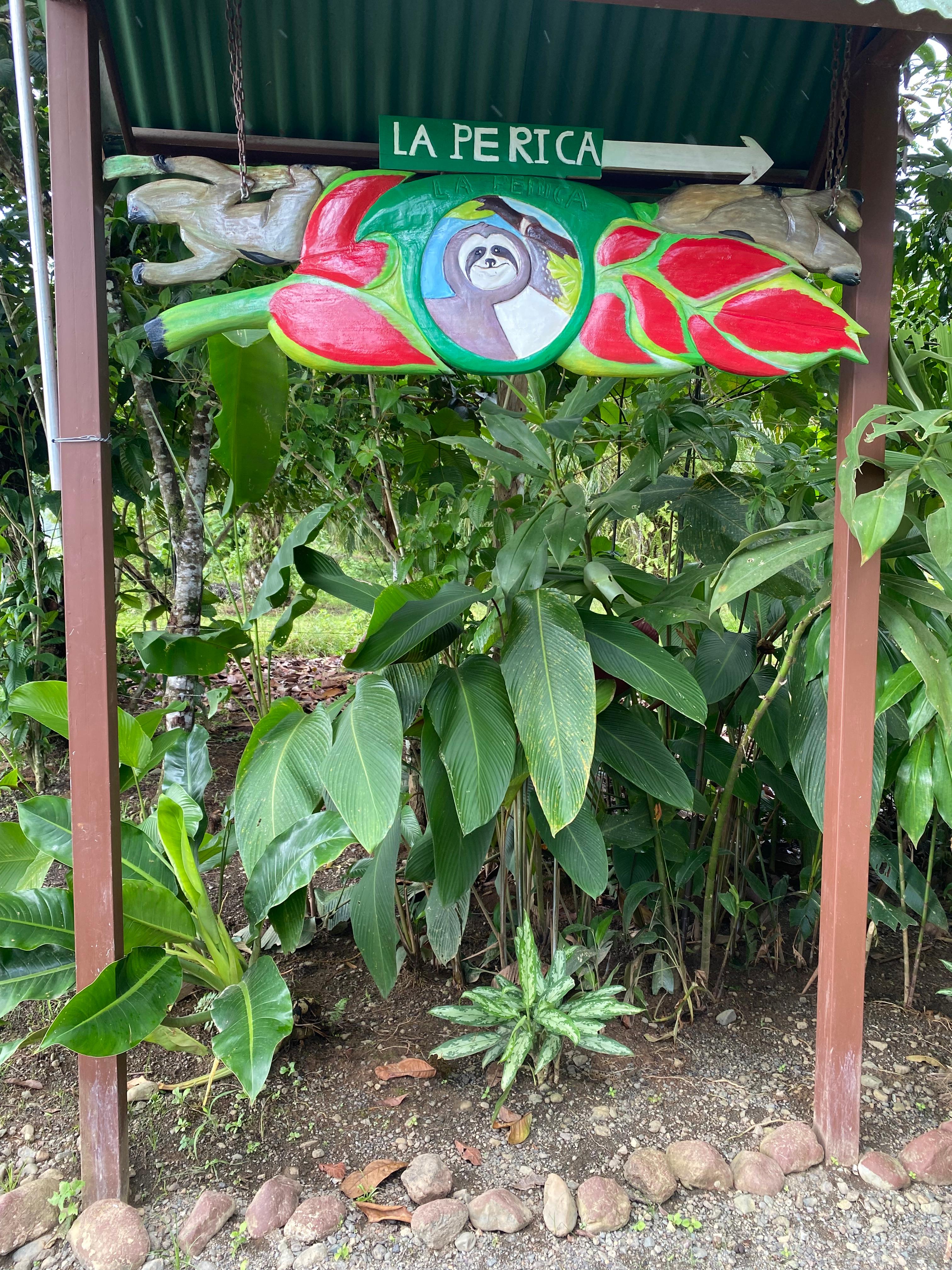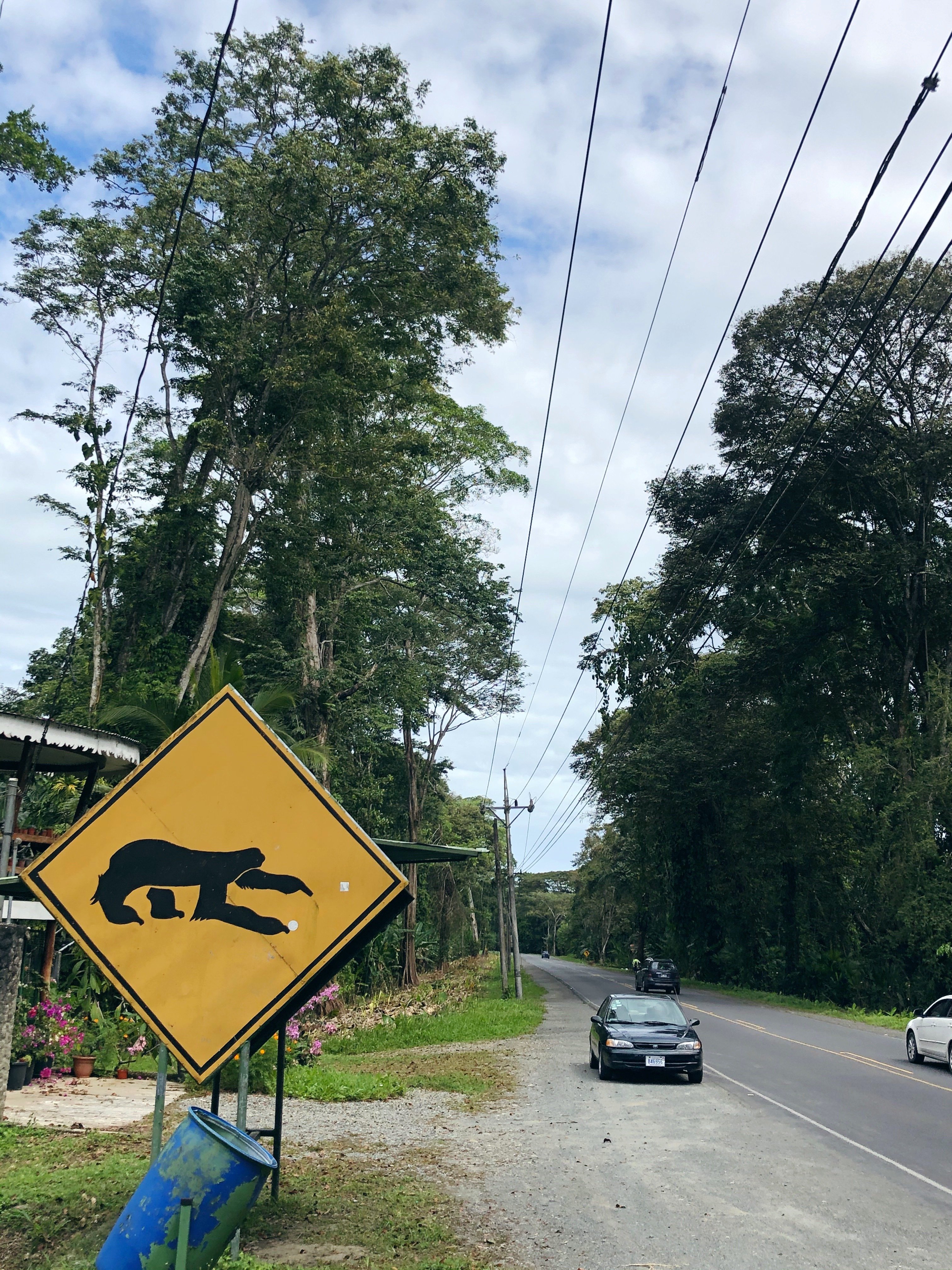
One of the biggest things on your bucket list for Costa Rica is seeing sloths of course! But how to spot these elusive cuties?
You can probably guess what’s waiting for you in Costa Rica. Thundering waterfalls, miles of coastlines, and dense rainforests filled with adventure plus your favorite jungle animals, like the sloth. When you first get to Costa Rica and see all the thick jungle, you'll wonder how you'll ever be able to spot these sometimes shy and very slowing-moving animals — it's something our volunteers in Costa Rica have more than a few tips about!
Interested in seeing all of this and more?
See what volunteering in Costa Rica is all about.
While seeing sloths on your semester abroad in Costa Rica is something we want to make sure happens for you, there are a few ways to make sure that you’re supporting the right people and aren’t disturbing these cuties as they live their lives out in the jungle. This blog post is split into a couple different sections, after giving you some information about how to see sloths in the best way (that won't interrupt their environment or create added stress to them), then some details about seeing sloths in the wild versus in a protective habitat.
Here are a couple of recommendations for seeing sloths in Costa Rica:
Finding Sloths In The Wild
You are in luck if you want to see sloths in the wild — Costa Rica is one of the best locations in the world for this to happen! We're big fans of seeing if you can spot sloths while you enjoy the waterfalls, jungles, hikes, and other outdoor activities.
There are two different species of sloths in Costa Rica and are found in several popular vacation spots in this country. If you spend time in the lush jungles (especially if you’re hiking quietly) you really increase your changes of finding a sloth. Here are a few more tips:
Top Tips For Seeing Sloths In The Wild
Know Where To Look
Check out places like Puerto Viejo, Tortuguero, Manuel Antonio, Uvita (the Dominical area), and the Osa Peninsula.
You won’t find any sloths on beaches near the Pacific Coast (or Guanacaste). Best to head inland to the jungles for the best sloth-spotting. Or, maybe just stay close to home — we have a few ILP locations in Costa Rica, and we've had semesters say they share trees with a cute sloth momma and her baby right by the coast, or see sloths weekly in their jungle-as-a-backyard.
Hire A Guide
Both the 3 and 2-toed sloths in Costa Rica are very good at hiding. Both species are very slow moving, and almost seamlessly blend into the foliage around them. At national parks like Manuel Antonio, there is an option to hire a naturalist guide to help you spot sloths and other animals like parrots and monkeys on your walk.
You’d be surprised how you can walk under a canopy of trees and not see a sloth hanging out above your head as you’re walking around! There have been multiple ILP groups who have opted to hike with a guide in the national parks in Costa Rica and were able to see sloths, thanks to their sharp-eyed guide.
Bring Binoculars
Or a telescope or a zoom lens on your camera. If you hike with a guide, they will likely have a telescope or binoculars you can look through to help you spot these guys snoozing in the treetops. You’ll want to keep your eyes up in the tree’s canopy to better your chances of spotting a sloth; they spend most of their time sleeping up there (up to 20 hours).

See Sloths At A Rescue Center Or Sloth Reserve
While you have pretty good chances of seeing a sloth if you hire a guide and are looking at the right places, you have a 100% guarantee of seeing sloths up close at a sloth reserve or rescue center. There are a handful around Costa Rica, with the intent on rehabilitating hurt animals back to the wild while others focus on getting animals a safe and healthy life if they are unable to return back to the wild.
Remember: no sanctuary or reserve will let you hold sloths because they have the animal’s best interest in mind, but you can still get close and learn loads about them. Here are a couple of options:
La Perica — In Osa Peninsula
Found in the small town of La Palma is La Perica, a corner of the jungle where sloths naturally love to just hang out. There's a conservation organization who wants to help protect the species and educate the public about sloths (and other animals who live here) and can take groups out on tours through the thick jungle with a guide. This guide will tell you a bit more about the sloths who tend to hang out here the most and more about the species.
Because this isn't a sanctuary (or a zoo) you're not 100% guaranteed to see a sloth ... though we've heard from everyone who has gone that they saw at least one. The tour includes lunch with fruit, and sometimes sugar cane juice that you can make yourself.
Contact for more information — @la_perica_sloth_garden or on Facebook. Here's their WhatsApp: 506 8322 7643.
Find it here, in La Palma.


The Sloth Sanctuary Of Costa Rica - In Puerto Viejo
The Sloth Sanctuary is one of the oldest conservation centers in the country, dedicated to the rescue, rehabilitation and research of sloths and conserving their rainforest habitat. Started in 1992, they claim to be the first sloth advocate organization in the country, focused on protecting and preserving these creatures.
The Sloth Sanctuary is currently home to over 200 injured, orphaned and abandoned sloths, most of which cannot be returned to the wild due to disability or lack of mother-taught survival skills. All the sloths at the center are there because of human encroachment or negative involvement in their habitat.
The staff is made up of local Costa Ricans who help care for the sloths and add valuable research to the web of information about these animals. One area of focus is releasing baby sloths into the wild after staying at the center. You can read more about the challenges here, but the Sloth Sanctuary is working hard on gathering data about animals released into the wild (through tracking devices).
You can read way more about what to expect on your visit, the cause of the Sloth Sanctuary, and more right here.
Booking A Tour + Prices
Visit this webpage to get more information on which tour would be best for you (they have a couple of options, ranging in price from about $25 to $150, depending on the level of access you want).
Getting Here
Find it on Route 36, 30 km South of Limón Limon, 7302, Costa Rica. If you're nearby Puerto Viejo, you can taxi or talk with the bus driver who's headed on the Limon/Cahuita/Hone Creek/Puerto Viejo route . Advise the driver that you are going to the Sloth Sanctuary (Sanctuario del Perezoso), and they can drop you at our gate.
Hours: 8:00 AM to 2:00 PM

The Toucan Rescue Ranch - Outside Of San Jose
One of our very favorite centers for sloths is the Tuacan Rescue Ranch, found in Heredia (which is just right outside of San Jose). The Ranch focuses on caring for sick, injured, confiscated, and displaced wildlife, specializing in toucans, sloths, and owls, though if you visit you will also run into weasels, jungle cats, parrots, and others. You can read more about their mission and staff here, but it’s a total must-do!
Booking A Tour + Prices
There is no public access without a reservation, so you will need to schedule a tour (easily done online) and select the package you want.
If you’re a sloth fan, I’d suggest their “Slothies and Coffees” tour which means sipping on coffee and munching on snacks while you watch a few young sloths eat. It’s 2.5 hours and $60 donation (but well worth it). Or, check out the Specialty Sloth Tour: it has limited dates (check the current dates here) but you get extra time with baby, young, and adult sloths plus a guided tour of the rescue center. This particular tour is 1.5 hours and costs $38.
There is also a general tour of the rescue center where you’ll see toucans, parrots, sloths, owls, monkeys and more while you learn about the animals’ stories and learn about animal and rainforest conservation. This option is about 2 hour long and has a donation of $35.
All proceeds go towards the upkeep of the animals and the facilities.
Getting Here
It’s just 20 minutes outside of San Jose. Our volunteers are already living nearby and just need to call an Uber, so it's a good after-teaching activity or weekend adventure.
The center is located off of Route 112 near downtown San Josecito, Heredia, San Josecito, Costa Rica.

Something To Keep In Mind
Animal tourism is a big part of Costa Rica, which sometimes isn’t the most ethical. Many companies and vendors (and even just regular people) know that tourists love to see sloths, so these animals are often pulled out of the rainforest and held on local street corners to earn a few dollars. As you might guess, sloths aren’t meant to be passed around and to live like this.
Sloths are incredibly laid back (must be that pura vida lifestyle) and being held or touched is incredibly stressful. Plus, humans can spread harmful bacteria and other infections to these guys, not to mention all the moss and algae that can grow on a sloth’s fur probably isn’t exactly healthy for humans. Not good.
We know you want to get up close to these animals, but it’s important to be aware of how they are being treated. If you see someone holding a sloth or letting you do the same, it’s not something to support. In fact, it's encouraged to call the police if you see someone exploiting a sloth for tourist purposes — if you find an injured or orphaned sloth (or a baby sloth without it's mom), you're invited to call +506 2750 0775 and provide the exact location & GPS coordinates so a rescue organization can help properly.
It would be pretty unreal to hold or touch a sloth, but please understand that if you want to support these animals and treat them well, that’s not an option if you want to see sloths in an ethical manner.

Excited to really experience Costa Rica?
Come call this country home for a few months as you live there as a volunteer! ILP (International Language Programs) works with a few schools in Costa Rica and sends volunteers to teach English part time. You'll live and teach with a group of college-aged volunteers and have the chance to travel on the weekends and on vacation days.
















